Abstract
Skin sensitization with DNCB was carried out in forty-five untreated, 106 "on treatment" and fifteen fully treated patients with pulmonary tuberculosis along with fifty-five controls. Mantoux test with PPD was also carried out simultaneously. All the normal controls could be sensitized to DNCB and the degree of sensitization was 4+ in majority of the subjects. In contrast, in untreated patients only eighteen could be sensitized to DNCB and the degree of sensitivity did not reach 4+ in any patient. Similarly, fifty-five patients could not be sensitized with DNCB in the group of 106 subjects who were still suffering from active disease and were on therapy and none gave a 4+ response. The difference in the proportion of subjects who could be sensitized to DNCB in these two patient groups was significantly less in comparison to controls. Among fifteen patients who were fully treated and did not have active disease thirteeen could be sensitized with DNCB, but the degree of response was again found to be less than the controls. All the patients as well as the controls gave a high proportion of Mantoux positivity. These findings indicate that there is a subtle degree of immunodeficiency in pulmonary tuberculosis which improves simultaneously with the clinical improvement.
Full text
PDF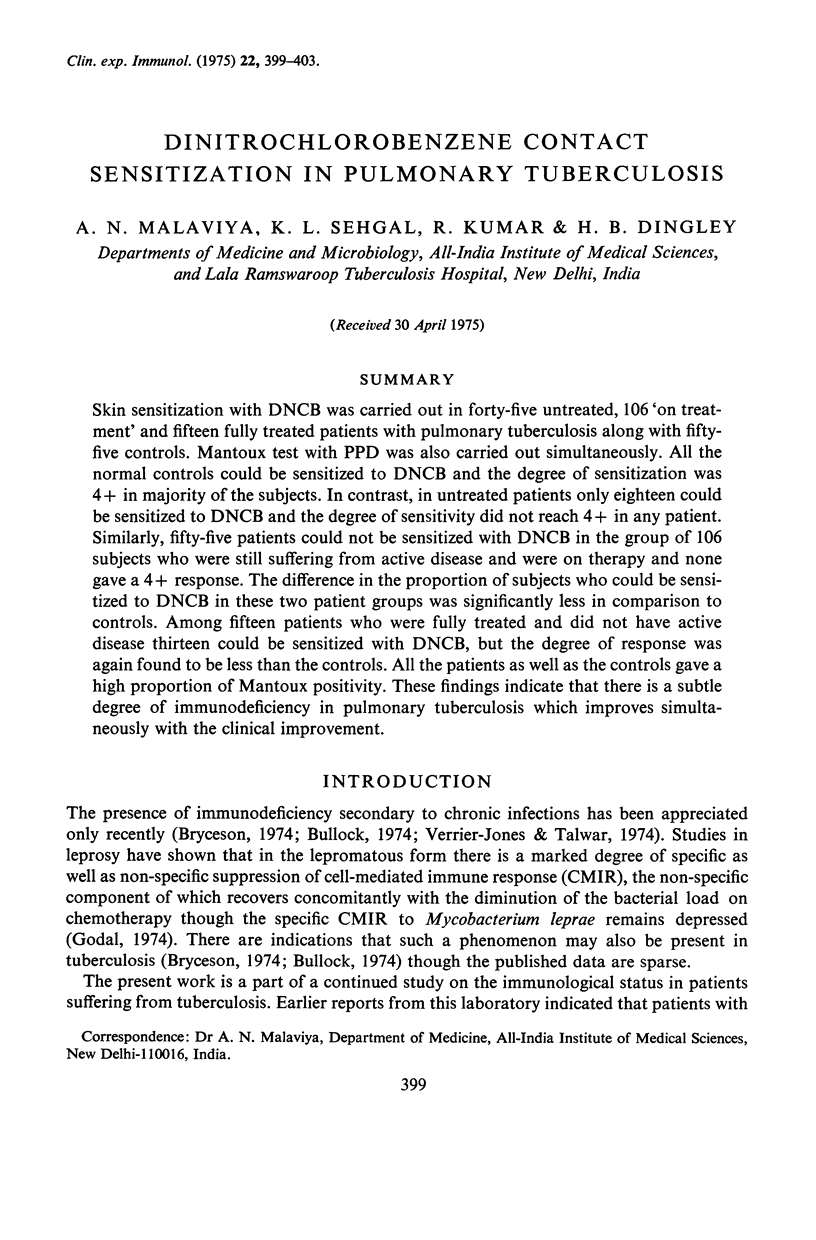
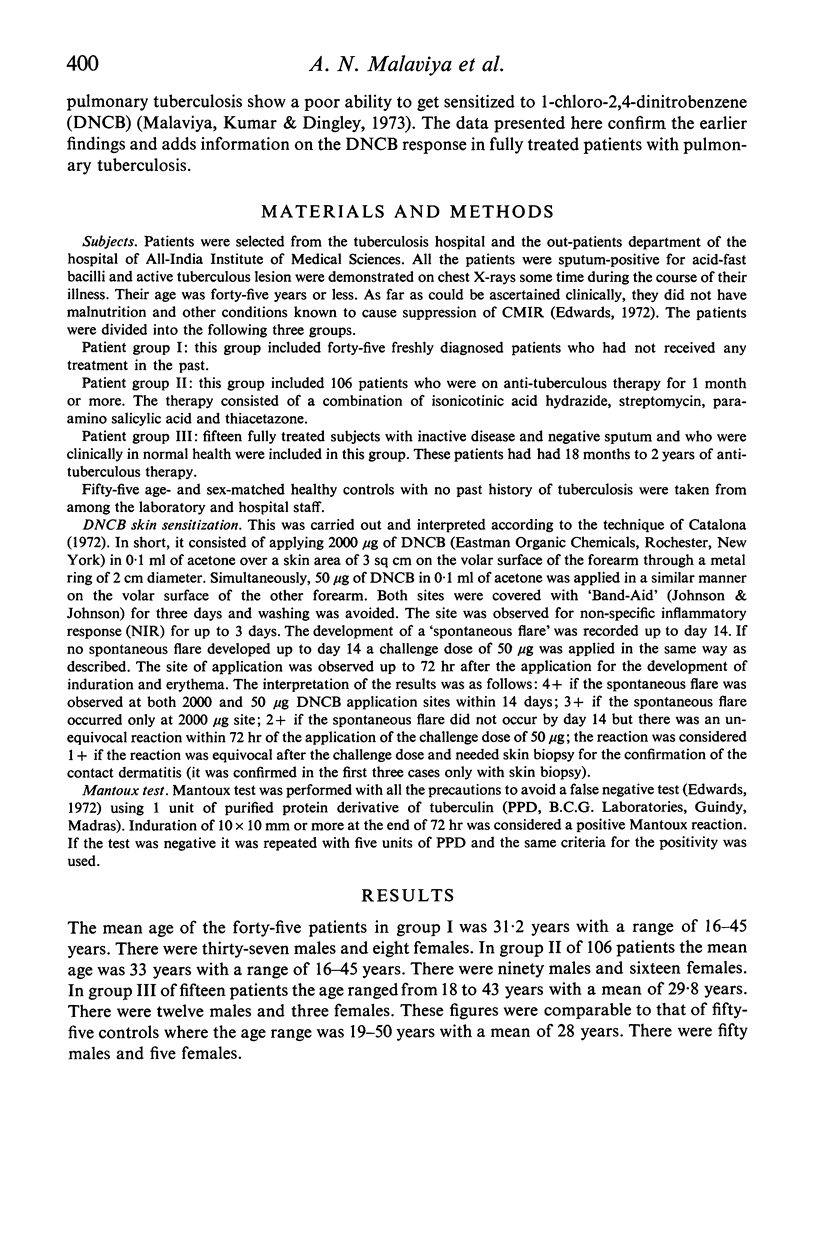
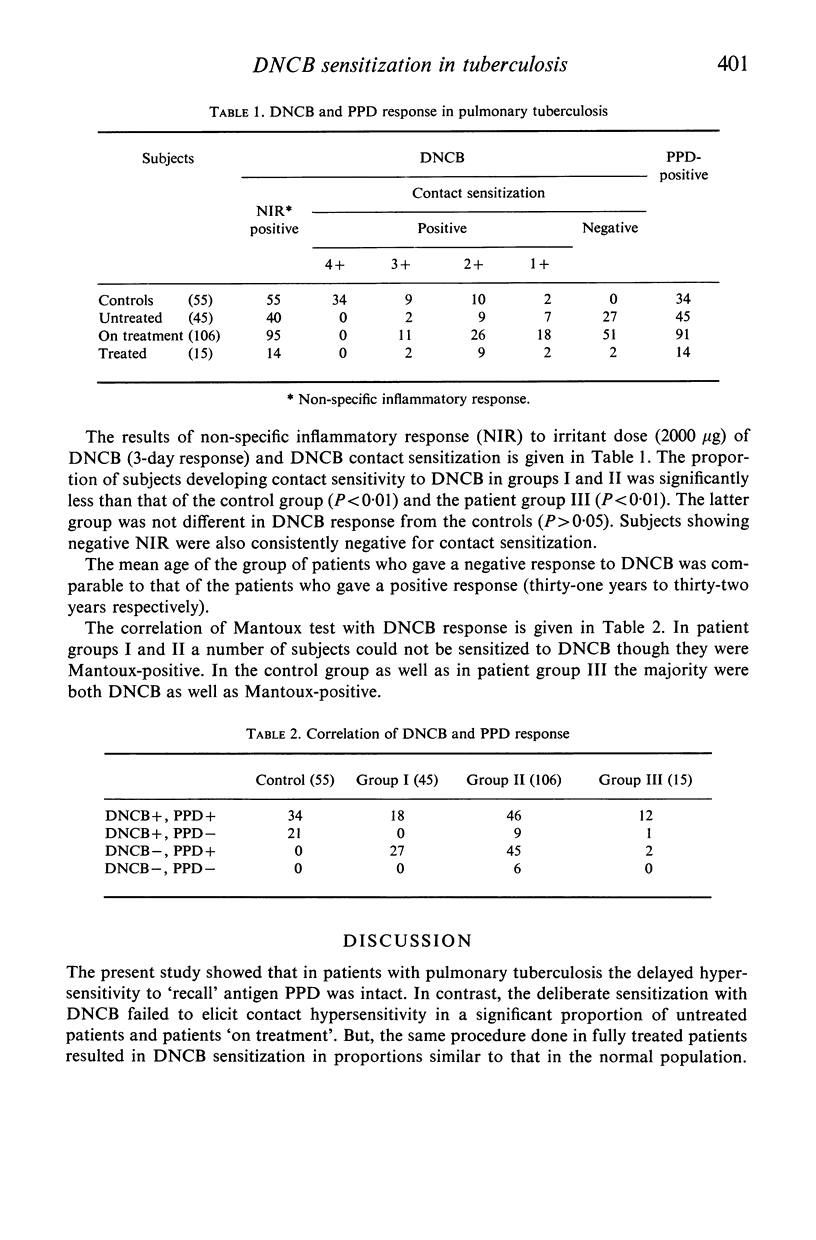
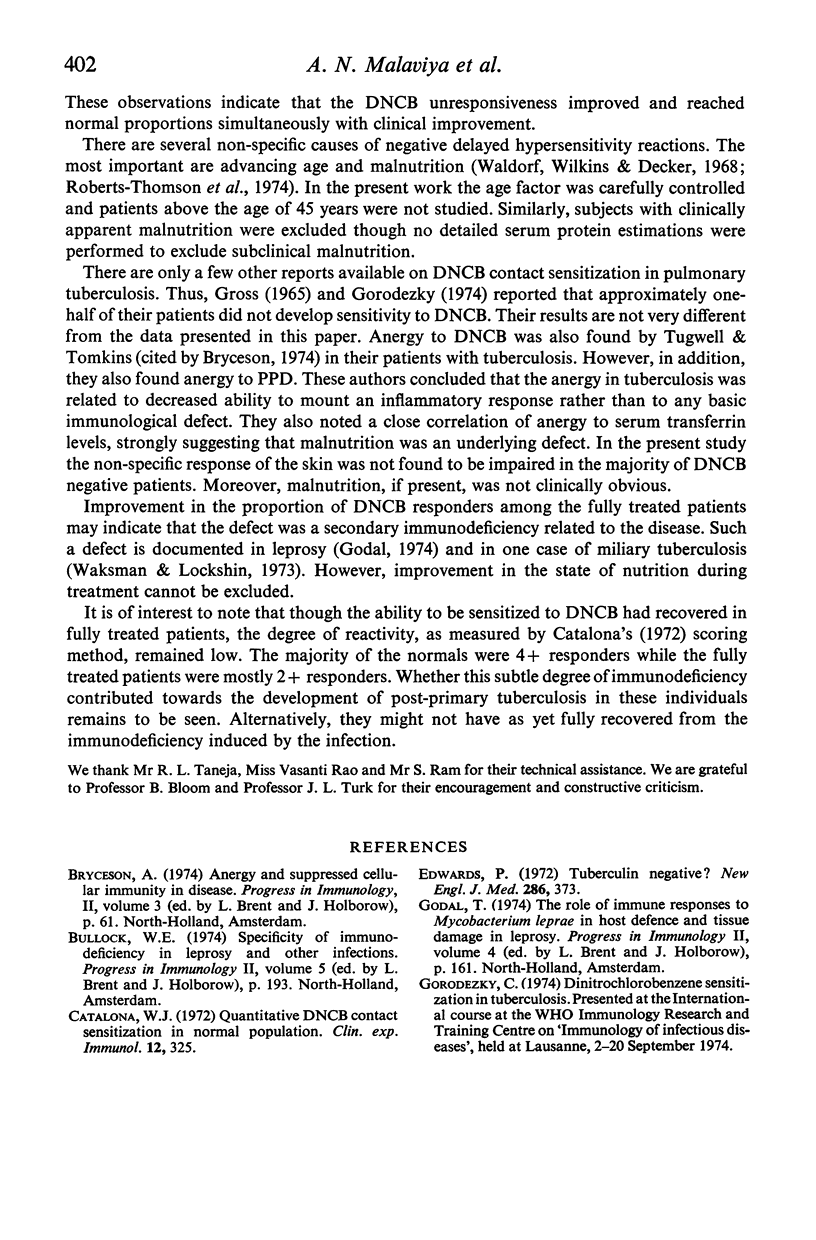
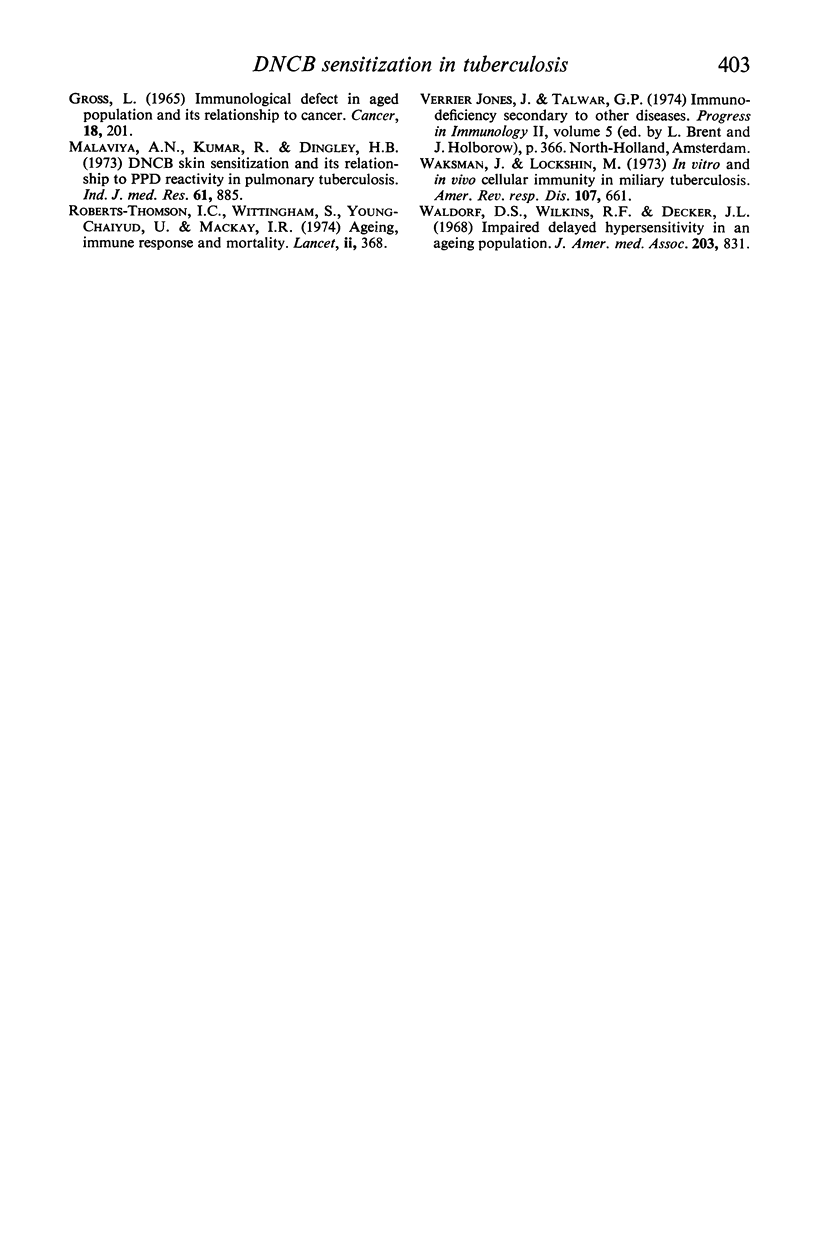
Selected References
These references are in PubMed. This may not be the complete list of references from this article.
- Catalona W. J., Taylor P. T., Chretien P. B. Quantitative dinitrochlorobenzene contact sensitization in a normal population. Clin Exp Immunol. 1972 Nov;12(3):325–333. [PMC free article] [PubMed] [Google Scholar]
- Edwards P. Q. Tuberculin negative? N Engl J Med. 1972 Feb 17;286(7):373–374. doi: 10.1056/NEJM197202172860712. [DOI] [PubMed] [Google Scholar]
- GROSS L. IMMUNOLOGICAL DEFECT IN AGED POPULATION AND ITS RELATIONSHIP TO CANCER. Cancer. 1965 Feb;18:201–204. doi: 10.1002/1097-0142(196502)18:2<201::aid-cncr2820180211>3.0.co;2-v. [DOI] [PubMed] [Google Scholar]
- Malaviya A. N., Kumar R., Dingley H. B. DNCB skin-sensitization and its relationship with PPD reactivity in pulmonary tuberculosis. Indian J Med Res. 1973 Jun;61(6):885–890. [PubMed] [Google Scholar]
- Roberts-Thomson I. C., Whittingham S., Youngchaiyud U., Mackay I. R. Ageing, immune response, and mortality. Lancet. 1974 Aug 17;2(7877):368–370. doi: 10.1016/s0140-6736(74)91755-3. [DOI] [PubMed] [Google Scholar]
- Waldorf D. S., Willkens R. F., Decker J. L. Impaired delayed hypersensitivity in an aging population. Association with antinuclear reactivity and rheumatoid factor. JAMA. 1968 Mar 4;203(10):831–834. [PubMed] [Google Scholar]
- Waxman J., Lockshin M. In vitro and in vivo cellular immunity in anergic miliary tuberculosis. Am Rev Respir Dis. 1973 Apr;107(4):661–664. doi: 10.1164/arrd.1973.107.4.661. [DOI] [PubMed] [Google Scholar]


